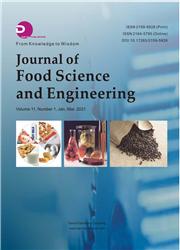Assessing the Potential Presence and Impact of Nile tilapia, Oreochromis niloticus (Pisces: Cichlidae; Linnaeus 1758) in Mutukutuku Reservoir in Solwezi, Zambia
引用次数: 3
Abstract
Invasive alien species are one of the greatest threats to biodiversity and ecosystem globally, affecting delivery of ecosystem goods and services, and consequently human well-being. Oreochromis niloticus is one of the most highly successful invaders of aquatic ecosystems with competitive characteristic advantages over indigenous species. The aim of this study was to investigate the potential presence and impact of O. niloticus on Mitukutuku fishery. The study was undertaken using fisheries independent surveys for the period of 2 months. Fish identification key and gel electrophoresis identification methods were also used to confirm presence of O. niloticus and also possible hybridization with indigenous congeneric species. Fisheries dependent survey was conducted with fishers and traders to further assess presence of the invasive species and its impacts on their catches and socio-economic well-being. A total of 32 Oreochromis hybrids species and 19 of O. niloticus were found in the reservoir. This confirmed a higher proportion of O. niloticus in the reservoir. Results from interviews of fishers and traders revealed catch per unit effort of O. hybrids and O. niloticus to be higher compared to that of indigenous congeneric species. Similarly, fish traders confirmed that income for the fish sales increased from 5% in March to 7% in August. Overall, these results suggested that O. niloticus does not only exist in Mitukutuku reservoir, but also hybridizes with native species and dominates the entire stretch of the reservoir threatening loss of biodiversity and aquaculture breeding programme. There is need for restricting culture of O. niloticus in Zambia.尼罗罗非鱼(Oreochromis niloticus)潜在存在及影响评估Linnaeus(1758)在赞比亚Solwezi的Mutukutuku水库中发现
外来入侵物种是全球生物多样性和生态系统的最大威胁之一,影响生态系统产品和服务的提供,从而影响人类福祉。nilochromis niloticus是水生生态系统中最成功的入侵者之一,具有与本土物种竞争的特征优势。本研究的目的是调查niloticus对Mitukutuku渔业的潜在存在和影响。这项研究是通过渔业独立调查进行的,为期2个月。鱼类鉴定键和凝胶电泳鉴定方法也证实了niloticus的存在,并可能与本地同属种杂交。对渔民和贸易商进行了渔业依赖调查,以进一步评估入侵物种的存在及其对捕捞量和社会经济福利的影响。在水库中共发现32种Oreochromis杂交种和19种O. niloticus。这证实了O. niloticus在水库中所占比例较高。对渔民和贸易商的访谈结果显示,与本地同属物种相比,杂交稻和尼罗稻的单位努力渔获量更高。同样,鱼类贸易商证实,鱼类销售收入从3月份的5%增加到8月份的7%。总体而言,这些结果表明,O. niloticus不仅存在于Mitukutuku水库中,而且与本地物种杂交,并在整个水库中占据主导地位,威胁着生物多样性和水产养殖计划的丧失。赞比亚有必要限制niloticus的培养。
本文章由计算机程序翻译,如有差异,请以英文原文为准。
求助全文
约1分钟内获得全文
求助全文

 求助内容:
求助内容: 应助结果提醒方式:
应助结果提醒方式:


